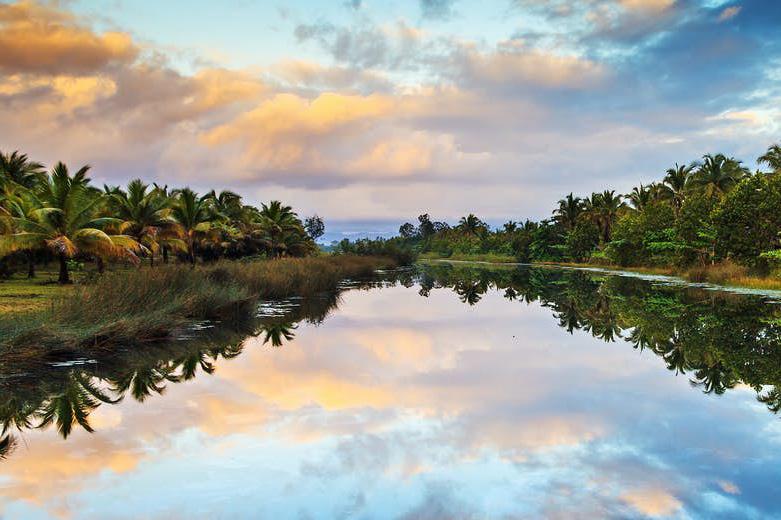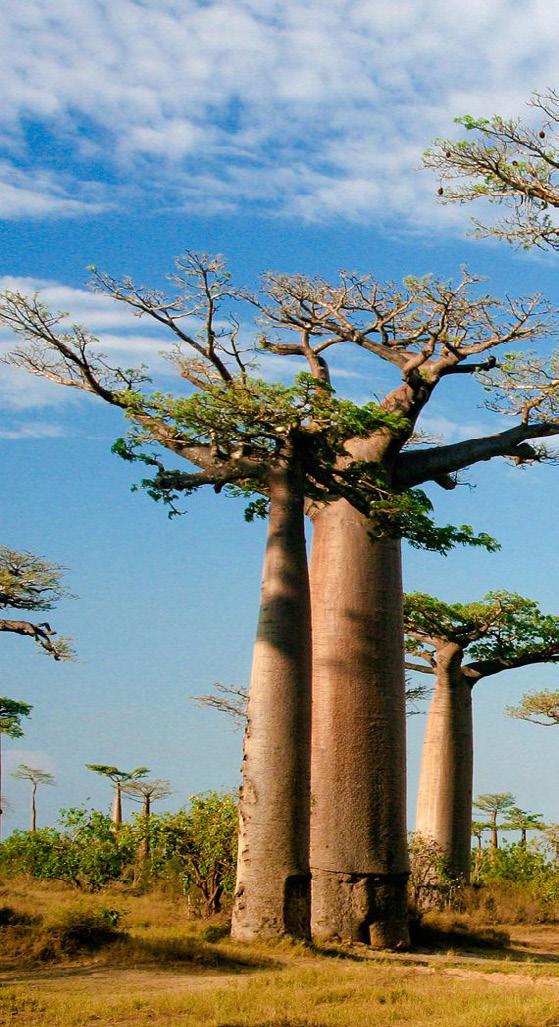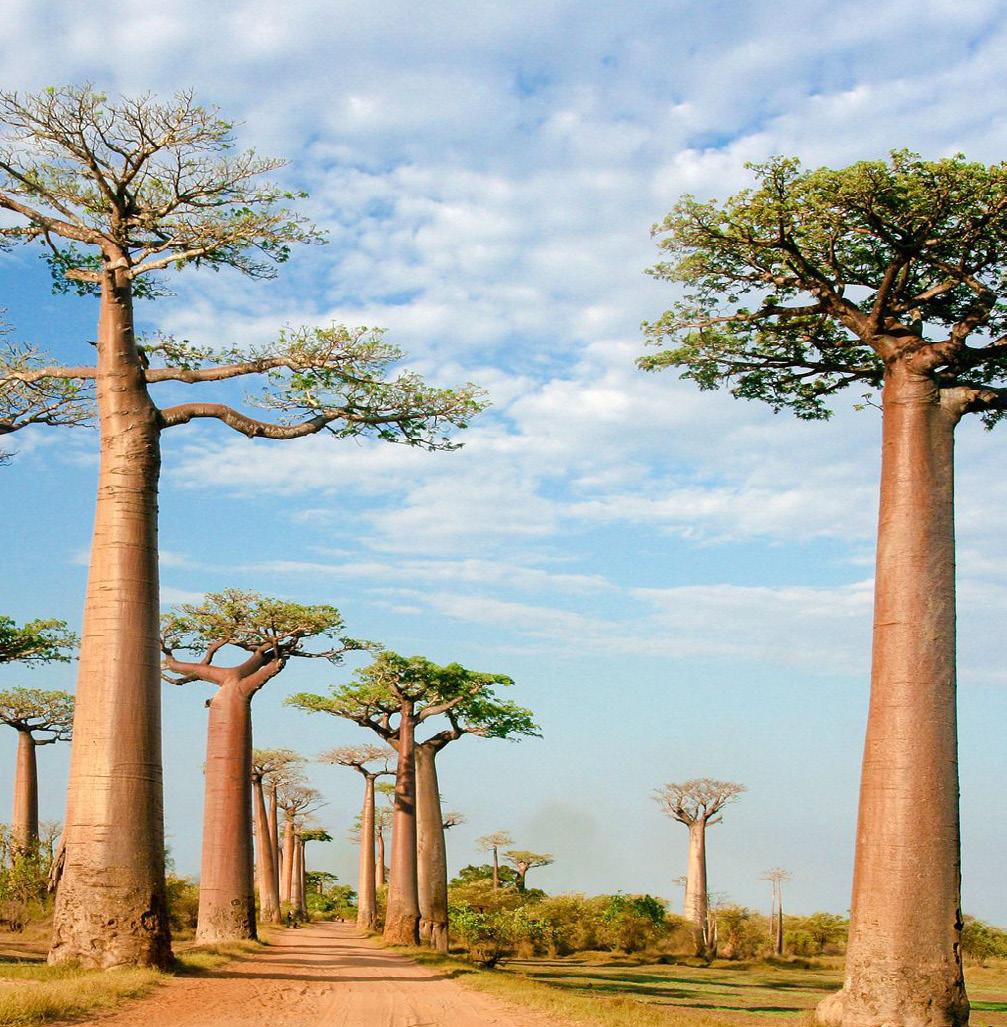
4 minute read
Madagascar – the home of the true lemurs!
The animated movie ‘’Madagascar‘’ left our spirits giddy and happy. You will remember the entertaining “King Julien” - the character that was the King of the Lemurs, and not only did he make us dance and sing, but he also introduced us to the fascinating primate that is native to the island of Madagascar - the lemur. It is reported that the island is home to over 110 species of lemur, and they are endemic species, meaning they are only found in this region.
By Louisa Choruma


Previously known as ’the “Malagasy Republic” and now fondly described as the home of the true lemurs, the island’s official name is “The Republic of Madagascar ‘’ and is the world’s fourth largest island, separated from the Africa’s southeast coastlines by the Mozambique Channel. With its capital Antananarivo, the island covers an area of 588 800 kilometres, and is characterised by two distinct distinctive climate zones - the wet East and the dry West, with the central region naturally a combination of both.
If an adventurous excursion to
Madagascar is on the cards for you, it is best to visit the Island between the months of July and November.
Described by many as a wildlife lover’s paradise, Madagascar is popular for its breath-taking landscapes and rich biodiversity! From families to adrenaline junkies, to honeymooners and birders – the island of Madagascar offers an assortment of activities for all.
VENTURE ACROSS THE ISLAND’S EASTERN REGION This region is in fact the inspiration behind Madagascar being referred to as the home of the true lemurs! It is also in its wealth of wildlife and plant diversity. With the East of Madagascar being the cradle to The Andasibe-Mantadia National Park. Brimming with thick tropical forests, together with wildlife that includes 14 species of lemur and 100 species of birds and is a must explore when on the island.
The Palmarium Reserve is also home of the Indri Lemurs. This private reserve, known locally by its name Ankanin’ny Nofy which means ‘nest of dreams’ in Malagasy, is spread across 50 hectares of peninsula land in the Lake Ampitabe area. It is here too, that rare flora such as the Malagasy palm trees (Dypsis and Lemurophoenix) are located.
Close to the Palmarium and off the east coast of Madagascar is the Nosy Boraha, which means either the “Island of Abraham” or “Island of Ibrahim” in Malagasy or Île Sainte-Marie. This gem of an island, with its white sandy beaches and clear blue waters, also carries a rich history of pirate activities of the past!
MADAGASCAR’S SOUTH The south of the island is a magnificent showcase of natural space and majestic landscapes! It is a celebration of tradition as local tribal communities can still be found cattle ranching and fishing as they have done for centuries. The Isalo National Park, with its dry and dramatic canyons is famous for its scenery and perfect for hiking and camping! Established in 1962 – the park is popular in the birders and botanists’ circles for its unique bird species and vegetation.
Located on the south east coast of Madagascar is Fort Dauphin or Taolagnaro in Malagasy. The fine beach lends itself to sun, sand, and wind surfing! Tours to nearby reserves, gardens and parks are available and it is the best place for eating out as there is an array of eateries.



OVER TO THE NORTH OF THE ISLAND… Also known as the Tropical North and the Diana region – the north is also famous for its astonishing landscapes, beautiful beaches, mangrove swamps and dense rainforests! The rich marine life in this region includes mammoth whales, whale-sharks and of course, various species of turtles!
Madagascar’s premier beach resort, Nosy Be Island is located in the Northwest and is an ideal destination for honeymooners! The combination of good climate, palm trees lining the beach and the rustic charm of its non-commercialised resort feel – makes it a top choice for anyone planning an escape from everyday reality. Amber Mountain National Park and Anakarana Reserve are also some of the many parks in the area that visitors can take time to experience.
CIRCLING BACK TO MADAGASCAR’S WEST Characterised by dry weather and savannah vegetation and farmland – the Western Region is great for hiking and exploring. It is the adventurer’s haven with its numerous cultural and natural attractions such as the Avenue of the Baobabs and Kirindy Reserve. This is Madagascar’s’ first official natural monument and is located on the dirt road on the west coast of Madagascar linking Morondava and Belo Tsiribihina. This road is lined with many rare, large and tall ancient baobab trees that create a stunning setting that looks likes giants protecting the users of the road! These captivating sights make for great photo opportunities!
We all fell in love with these small, long snouted, large-eyed, triped tailed and tree loving creatures; after watching the DreamWorks blockbuster Madagascar, but it is quite clear to see that a trip to this Indian ocean island offers one an opportunity to interact with more than just the lemur, but the abundance of flora and fauna that make this island one to be reckoned with. And so, if perhaps you are looking to trek across an island that’s fairly untainted when pitted against more widely explored Indian ocean island counterparts, also boasting much by way of biodiversity, Madagascar’s lemurs and so much more await you!










